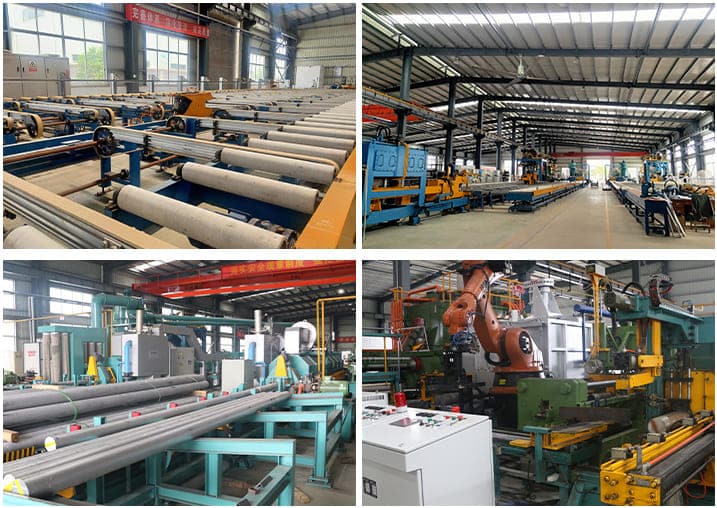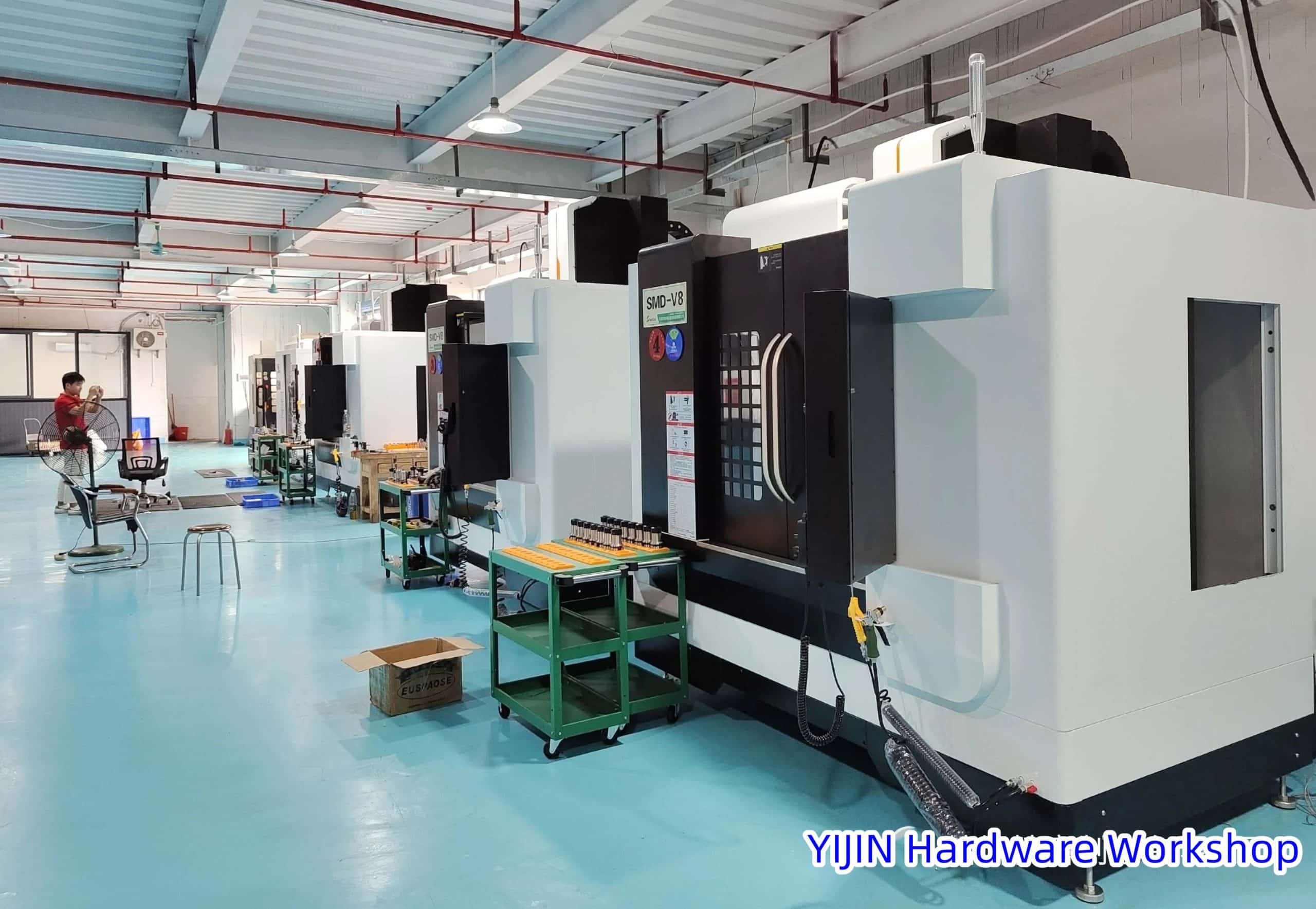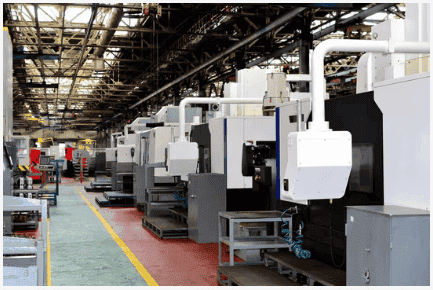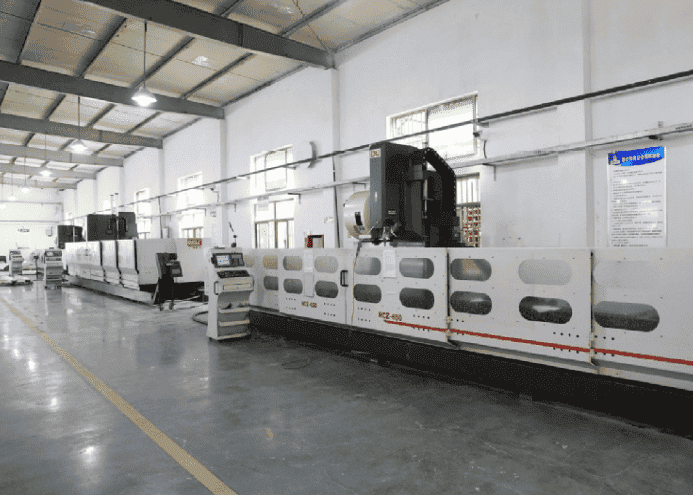Iron is the metal that is used the most, however, aluminum is one of the metals that comes in a close second.
Additionally, it is the element that makes up around 8% of the total mass of the earth’s crust, making it the element with the highest abundance.
Because it is one of the most versatile metals, it may be mixed with other metals to improve not only the qualities of those metals but also the properties of the combined metals.
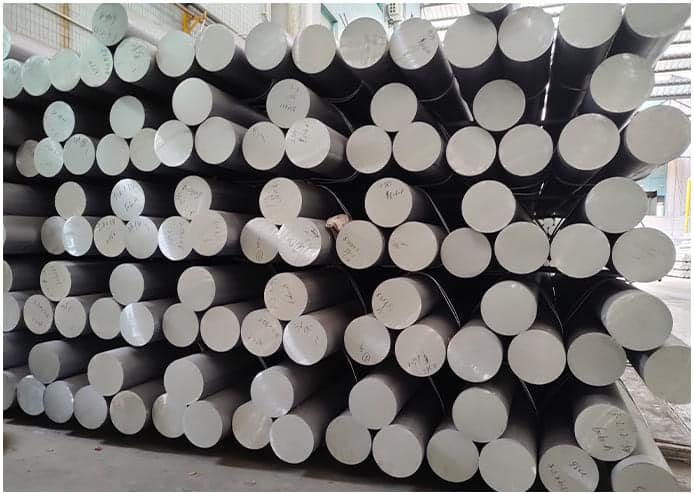
Aluminum, in its elemental state, is almost useless, thus it must be alloyed with other metals before it can be put to any kind of useful use.
China is the world’s largest producer of aluminum, producing a staggering 32.6 million metric tonnes in 2015, which is almost ten times more than the next largest producer, Russia, and accounting for more than half of the world’s production.
Currently, Australia is the largest producer of the primary aluminum ore, bauxite, in the world. However, the world’s largest producer of aluminum is China.
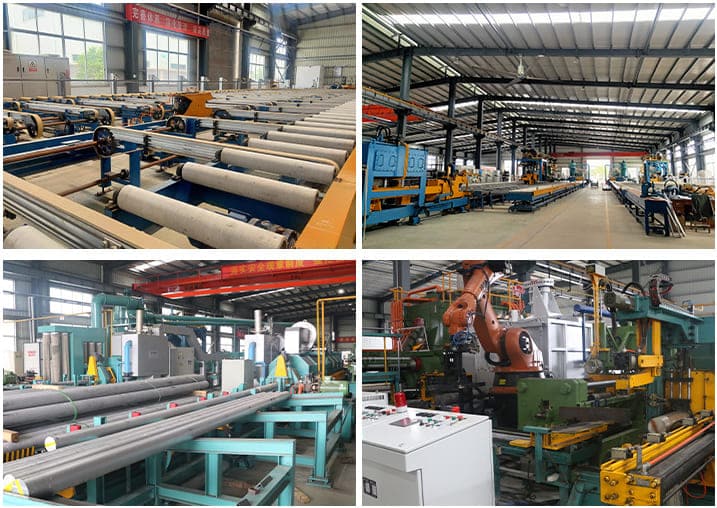
The aircraft sector makes extensive use of aluminum due to its high strength-to-weight ratio, flexibility, and resistance to corrosion, all of which are good attributes that make aluminum particularly useful.
In addition to that, it is not magnetic. It is possible to tailor the chemical makeup of aluminum alloys to meet the requirements of a broad variety of applications within an aircraft.
The History of Aluminum in Aircraft
The use of aluminum in airplanes can be traced all the way back to the very beginning of the aviation industry.
The Wright Brothers are credited with being the first individuals to successfully complete a flight in an airplane on December 17, 1903.
In order to accomplish this remarkable accomplishment, they had to develop a specialized engine that was composed of aluminum rather than steel, which was the material of choice at the time.
The rationale for this was to ensure that the engine was not too heavy for it to fly. This marked the beginning of the usage of aluminum in the aircraft industry.
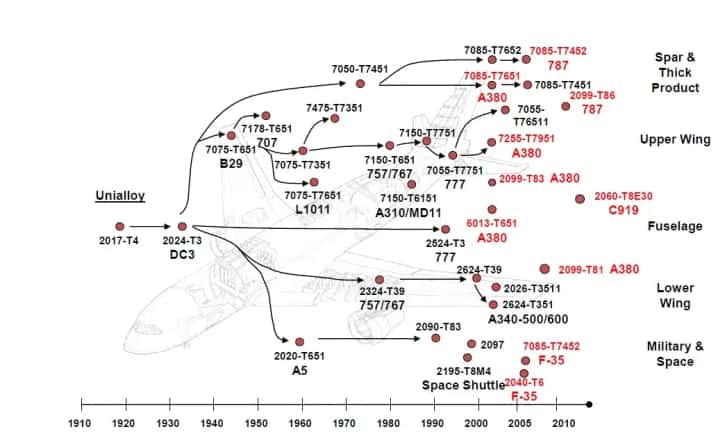
By the time of the First World War, aluminum had started to be used for the body of airplanes as well, taking the place of traditional materials like wood and canvas.
Hugo Junkers, a German aircraft designer, created the Junkers J 1 in 1915. The aircraft’s interior construction was made of aluminum alloy tube, making it the first wholly metal plane ever developed.
The period of time between World Wars I and II is commonly referred to as the golden age of aviation.
This was a time when aircraft designs were being developed at an accelerated rate, which led to the increased usage of aluminum alloys in their construction.
Because of this recently discovered use for aluminum, the demand for the metal skyrocketed, which led to an increase in the production of aluminum.
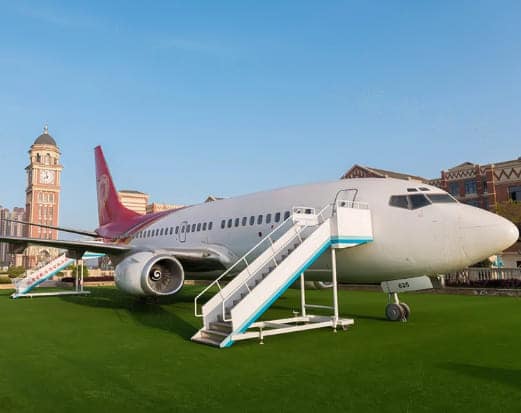
The use of aluminum in modern aircraft has become increasingly complex over the years; yet, the fundamental advantages of using aluminum have not changed.
These advantages include that aluminum is lightweight, yet it is also robust and resistant to corrosion.
In point of fact, the widely used Boeing 737 has eighty percent aluminum in its construction.
The fuselage, the wings, the doors, the flooring, and the seats are all now all constructed of aluminum, meaning that virtually no portion of an airplane that can be replaced with aluminum has been spared in the contemporary period.
Benefits of Aluminum for Aircraft and Aerospace Applications
Aluminum has traditionally been the metal of choice for use in aerospace applications due to the favorable combination of its lightweight characteristics and high strength-to-weight ratio.
Aluminum provides the aerospace industry with a number of additional benefits, including the following:
- Resistance to wear and tear in high-stress settings as well as extremes of temperature and pressure
- The ability to be formed paves the way for the simple manufacture of smaller aircraft parts.
- The electrical conductivity of aluminum alloys is exceptionally high.
- Aluminum is a material that may be used as a less expensive substitute for several other types of materials due to its lightweight qualities.
- When it comes to airplanes, having a lower gross weight might mean lower fuel usage and total cost savings.
Aluminum Material Properties
Due to the high degree of reactivity of aluminum, it is infamously difficult to extract aluminum from its ores.
Recycling aluminum, on the other hand, requires just 5% of the energy that is necessary to extract aluminum from its ores.
Because of the great rate of recyclability that aluminum possesses, about three-quarters of all of the aluminum that has ever been produced is still in use today.
In the presence of oxygen, aluminum undergoes a chemical reaction that results in the formation of an oxide.
However, unlike iron, the oxide that results from this reaction adheres to the surface of aluminum, which protects it from further corrosion.
Because aluminum is so adaptable, there are hundreds of different alloys that can be made from it.
The aviation sector has highly particular needs, and aluminum alloys (or grades) are developed to meet those criteria.
However, the most crucial quality, lightweight, is maintained in all of these aluminum alloys and grades.
Aluminum has a strength-to-weight ratio that is twice as high as that of stainless steel but has a weight that is one-third that of stainless steel for a given volume.
When exposed to high temperatures, aluminum loses some of its strength, but its strength rises when exposed to temperatures below zero.
This is a property that is beneficial in the aerospace industry since airplanes fly in environments with very low temperatures.
Comparison of Aluminium, Beryllium, and Magnesium
| Aluminum | Beryllium | Magnesium | |
| Boiling point | 2494oC | 2770oC | 1107oC |
| Density | Low | Low | Low |
| Strength | High | High | High |
| Toxicity | Non-toxic | Highly toxic | Low toxicity |
| Flammability | Nil | Flammable | Highly flammable |
| Integrity at elevated temperatures | Maintains its structure at high temperatures | Relative stability at high temperatures | Obeys a unary phase diagram |
| Corrosion resistance | High | Medium | Highly corrosive |
| Reaction with water and acids | Nil | High | High |
Aluminum Grades Used in Aircraft
The designation of aluminum alloys is accomplished by the use of a four-digit numbering system, with the first digit denoting the alloy group and the remaining digits indicating the additional metals that are included in the alloy.
A prefix is used to indicate what kind of treatment the substance has been subjected to and to what extent it has been subjected to that treatment.
The processes indicated by the initials F, O, H, W, or T are respectively referred to as fabrication, annealing, strain hardening, solution heat treatment, and heat treatment.
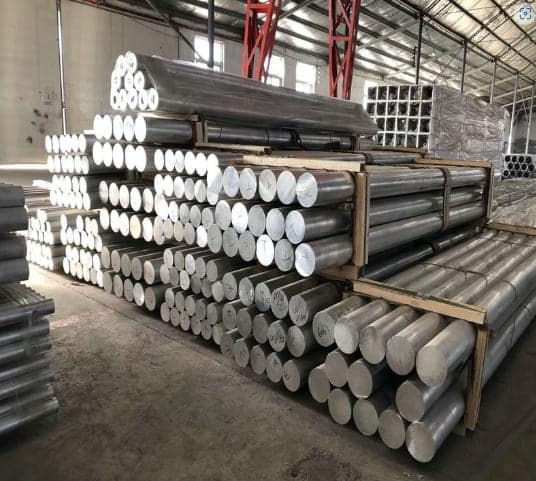
The precise qualities that an aluminum alloy possesses are determined by the quantities and components that make up the alloy.
There are literally hundreds of distinct aluminum alloys that are used today in a variety of industries for a variety of purposes.
The types of aircraft that are utilized the most frequently, as well as the reasons they were selected for their various purposes, are detailed below.
2024-T3
4.5% copper, 0.6% manganese, and 1.5% magnesium are the components that make up 2024-T3.
Because of its excellent strength and resilience to fatigue, this aluminum alloy is among the most popular choices for aviation alloys.
It is also one of the lightest aircraft alloys available. Welding is not a viable use for it, but because of its superb finish, it is a fantastic alternative for work that involves repairing things.
6061-T6
Copper makes up 0.25% of 6061-T6, whereas silicon makes up 0.6%, magnesium makes up 1.0%, and chromium makes up 0.25%.
Additionally, this metal offers excellent finishing. In addition to that, it has a decent resistance to corrosion and is an excellent material for welding.
It is equivalent to mild steel in terms of both its strength and its workability. It may be worked with heat.
3003-H14
The most common type of aluminum alloy is 3003-H14, which has 1.2% manganese and is used extensively.
Because it can be extruded, brazed, machined, and welded, it is incredibly simple and straightforward to deal with.
It is not possible to cure it with heat, but it is possible to strengthen its strength with cold work.
7075-T6
1.6% copper, 2.5% magnesium, and 5.6% zinc are the components that make up 7075-T6.
It is a material that is frequently utilized by producers of aircraft in order to reinforce the structure of the aircraft.
Because it contains copper, it is difficult to weld yet easy to machine because of its high copper concentration. It may be worked with heat.
5052-H32
The alloy 5052-H32 has 2.5% magnesium and 0.25% chromium by weight. This alloy has the maximum strength in the series of non-heatable alloys and has the potential to generate additional strength through the process of cold working.
In addition, it possesses good fatigue strength, resistance to corrosion, and workability, all of which contribute to its suitability for use in aviation and maritime applications.
General usage of aluminum alloy on B-777.pdf
Commonly Used Aluminum Alloys in Aerospace
2024
The aluminum alloy 2024 is the one that is utilized the most frequently in the aerospace industry.
The alloy possesses a high yield strength and is a high-grade alloy with exceptional fatigue resistance.
Additionally, the alloy has a high grade. Sheets of it are often utilized for the wings and fuselage of the aircraft.
2014
In this sector, the alloy 2014 is the second most common type of aluminum alloy utilized.
Although it has a reputation for strength and hardness, it is easily corroded. As a result of this, it is typically utilized within the framework as opposed to the shell.
This alloy is popular for a number of reasons, one of which is the fact that it can be successfully welded using an arc.
5052
This particular grade of alloy cannot be heat treated. In addition to having the maximum possible strength, it also has a very high degree of ductility.
Because it is extremely resistant to corrosion and can be molded into a variety of forms, it is a suitable addition for a wide variety of applications in the aerospace industry.
6061
The Grade 6061 is frequently utilized in the field of light crafts. The fact that it can be machined and welded with relative ease contributes to the material’s popularity for use in the aforementioned applications.
It has a reasonable amount of strength and is notably featured in the wings and fuselage of the aircraft.
7050
Because of its great resistance to corrosion and high strength even in vast portions, grade 7050 is frequently employed in the skins of wing and fuselage structures, particularly in military vehicles.
One of the reasons that it is held in such high respect in the aerospace sector is that, in comparison to other alloys, it has a strong resistance to fractures.
7068
This is one of the lightest alloys available while yet maintaining a high level of strength.
It is ideal for vessels that need to be able to withstand harsh circumstances, and it is also utilized in aircraft employed by the military.
7075
Because it contains a significant amount of zinc, grade 7075 has a degree of strength that is equivalent to that of steel.
It possesses excellent resilience to fatigue and is not difficult to machine. During World War II, it was a common option for aircraft, and it continued to be used in many other types of military aircraft after the war.
Read more: 6061 Vs. 7075 Aluminum, Which One Is Better?
FAQ
Why are aluminum alloys utilized in airplane construction?
The aircraft sector makes extensive use of aluminum due to its high strength-to-weight ratio, flexibility, and resistance to corrosion, all of which are good attributes that make aluminum particularly useful. In addition to that, it is not magnetic.
It is possible to tailor the chemical makeup of aluminum alloys to meet the requirements of a broad variety of applications within an aircraft.
Why isn’t aircraft constructed entirely of aluminum metal?
Pure aluminum is an extremely malleable metal, however, this quality makes it unsuitable for use in the production of structural components.
Alloy materials are created when additional elements are added, and these materials can have varying levels of structural strength, resistance to corrosion, and workability.
Which aluminum alloy possesses the most strength?
7068-T6511. Tantalum 7068 was designed as an ultra-strong alloy with the designation 7068-T6511. It is also known as Tennalum® 7068.
It possesses the highest mechanical strength of any commercially available aluminum alloy, with a yield strength of 99 KSI (683 MPa).
It is 2.5 times stronger than 6061, and 35% stronger than 7075. This strength is more than that of several plates of steel.
Is 100% pure aluminum possible?
You are probably aware by now that aluminum in its purest form can never be found in nature.
Instead, compounds of aluminum may be found in the hard lumps of ore that are buried deep within the crust of the earth.
This one is known as bauxite, and as was said before, it is the primary source of aluminum in its purest form all over the world.
Is Aluminum suitable for aeronautical applications?
This particular grade of alloy cannot be heat treated. In addition to having the maximum possible strength, it also has a very high degree of ductility.
Because it is extremely resistant to corrosion and can be molded into a variety of forms, it is a suitable addition for a wide variety of applications in the aerospace industry.
What is the purest form of aluminum that may be found on Earth?
As was said before, alum 1100, which is sometimes referred to as being commercially pure, is aluminum that is at least 99% pure.
Why is the element Al 6061 used?
The most widely utilized and one of the aluminum alloys with the highest degree of versatility is bar grade 6061 aluminum.
The strength, workability, resistance to corrosion, and simplicity of joining made possible by aluminum bar grade 6061 are only some of the reasons why it finds employment in such a broad variety of industries and applications. In comparison to the 2000 series, its machinability is significantly lower.
Will there always be aluminum on Earth, or will it eventually run out?
The global inventories of one of the metals that are used in most applications will be depleted by the beginning of 2024, according to the global trading giant Trafigura Group, which has issued a dire warning to purchasers of aluminum.
Why can’t aluminum be used in sustainable practices?
Bauxite is the material that is used in the production of aluminum; aluminum cannot be found in its natural state and must be manufactured.
Aluminum, much like oil, is a finite resource that cannot be produced cost-effectively. In order to produce one ton of aluminum, roughly twenty tons of bauxite are required.
Conclusion
Additionally, aluminum is utilized in the construction of spacecraft, an industry in which the material’s one-of-a-kind qualities would be of much greater significance.
In point of fact, the majority of spacecraft (up to 90%) are constructed out of aluminum.
Aluminum components are used not only in spacecraft but also in space stations like Skylab and the International Space Station.
Aluminum components are also used in certain spacecraft. It is anticipated that the Orion spacecraft, which is currently being developed with an aluminum-lithium alloy, would usher in a new era of manned space travel with the opening of new horizons.
Recommended: Top 10 Aluminium Sheet Products Suppliers In China
 Call Us Today! (+86) 188-2253-7569
Call Us Today! (+86) 188-2253-7569